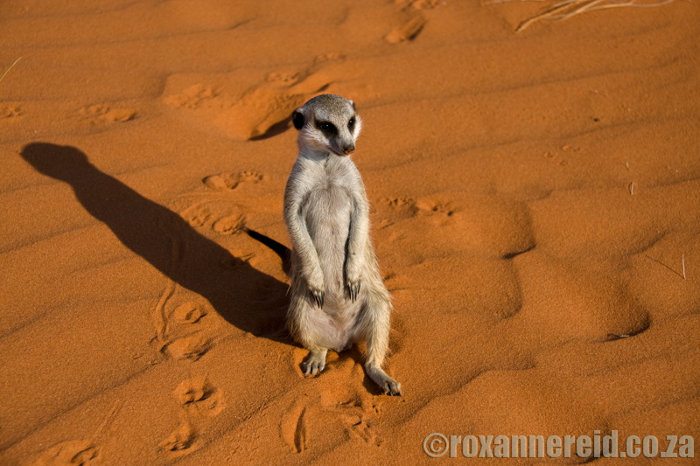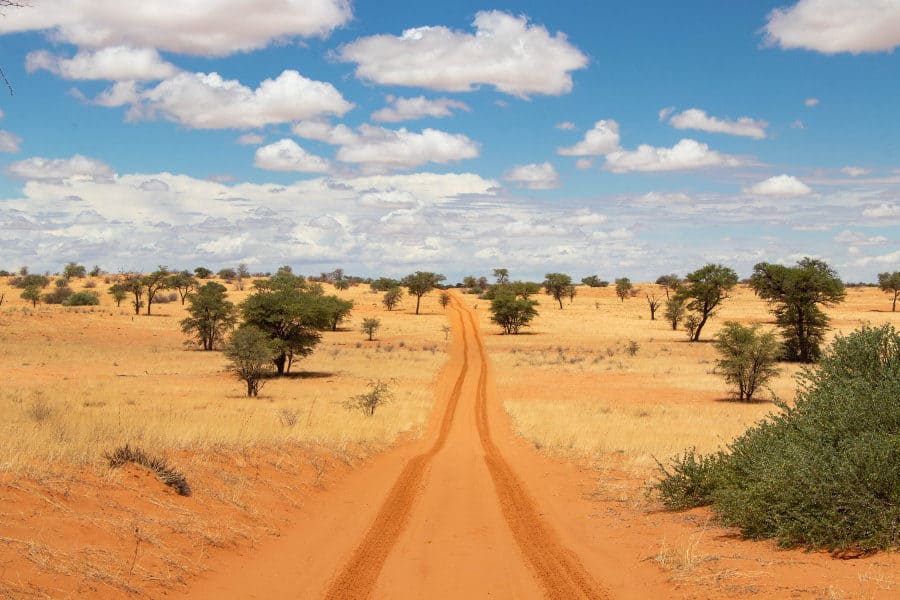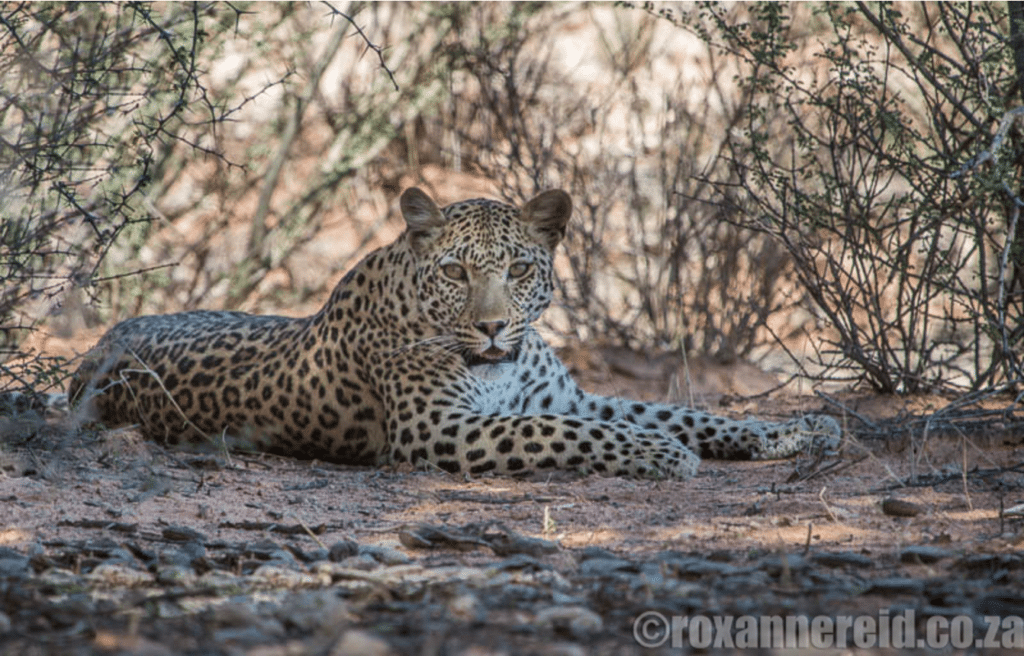There’s nothing like entering the world of a tiny meerkat on a walk across the Kalahari dunes.
The retired Professor Anne Rasa at Kalahari Trails Camp, a nature reserve about 35km south of Twee Rivieren in the Kgalagadi Transfrontier Park, is very clued up on the tracks of little creatures like insects, beetles, scorpions, skinks and geckos. But for us the best thing when we visited was that she was rehabilitating a meerkat pup.
He had been taken from his mum and sold as a pet. Later he had been saved from the pet owner, who was wondering why he was so thin and sad when she was feeding him lovely pumpkin. The silly woman obviously didn’t have a clue that he was a hot-blooded predator who was craving scorpions, beetles, spiders and crickets. And when we visited, that’s exactly what the Prof, who studied dwarf mongoose in Kenya and yellow mongoose in the Kalahari, was teaching him to hunt.

Meerkats in the wild are supremely sociable animals, living in burrows in family groups of up to about thirty individuals. Although they can be ferocious towards other packs, they’re quite friendly to each other. And because they’re sociable by nature, this little orphan needed a pack. For him the Prof was his family – and on that particular day we were too.
So little Fizzle (a portmanteau name combining Fidget and Grizzle, which summed him up perfectly) came walking with us in the dunes. If we crouched down to look at a beetle track, he’d climb onto our knee to get a better look around, or he’d go digging for food in the track we were trying to identify.
Since meerkats use their sense of smell to sniff out potential snacks under the soft sand, he’d occasionally dig like a madman with rapid movements of his long-clawed front feet. If he came up empty-handed, he’d glance over his shoulder as if embarrassed, and then scamper off to a new spot, head low, tail trailing, his butt higher than his head in the classic silhouette so characteristic of these little creatures.

In the wild, most meerkat spread out to forage individually, yet always taking care to stay in visual and vocal contact. They take it in turns to act as guards, often climbing bushes to get a better view. The young ones usually don’t stray too far and Fizzle was no different.
We learnt his different calls, an almost constant murmuring punctuated by a few sharper sounds. The murmuring was just for keeping in touch with us, his family, but we also heard two distinctly different alarm calls. One was for aerial predators like eagles and the other for landlubbers like snakes – which Fizzle didn’t like, not even a bit.

When the Prof spotted snake tracks in the sand we followed them to the shade of a small bush, where we found a horned adder, a warm rusty colour with striking brown-and-buff patterns. None too chuffed at being disturbed, it inflated its body and hissed a warning. Fizzle cried out and hid behind the Prof’s leg. Just as well he didn’t know snake tracks as well as she did, because she also pointed out the tracks of a Cape cobra, puff adder and fork-marked sandsnake. All that might have sent Fizzle into a tailspin.
Although he was still just a kid he was already catching his own food; the Prof was determined he should learn to fend for himself. If the tracks we saw were anything to judge by, the red dunes where we were walking were full of potential Fizzle meals, from trapdoor and buckspoor spiders to thick-tailed scorpions, dung beetles, cockchafers and armoured crickets.
When he found a toktokkie beetle, he battered it a bit with his front claws before giving it a tentative bite. Only then did he bite down hard and deliver a sort of death shake. When he discovered some enormous sugar ants, he was careful to scrape them on the sand a few times before crunching down.
‘That helps to wipe off the formic acid they use as a defence mechanism,’ the Prof explained. Formic acid burns like hell, so it was obviously a lesson he had learnt the hard way.
If we stopped to talk about a spoor for too long, he’d sit back on his hind legs in a comical kind of ‘lazy-sit’ posture, slumping on his spine with his tail forward and front paws dangling. But let a bird of prey fly overhead, casting a slow shadow across the dune, and he was up and off in a flash, running for protection at the Prof’s side, pressing close to her leg. When she moved off again, it was as if he was pulled by an invisible string, an irresistible urge to follow and catch up with her before he started exploring again.
Walking in the dunes with someone who knew them as well as the Prof did was like learning to read the Dune Newspaper, interpreting the messages in the tracks left overnight by a springhare, striped polecat, pygmy gerbil, yellow mongoose, bat-eared fox, steenbok or small spotted genet.
We were even lucky enough to see Kalahari dune art in the form of flower-like tracks made by burrowing grasshoppers and dancing lady spiders.
But definitely the best part was spending time with Fizzle and learning about his meerkat world.
—
This article first appeared on Roxanne Reid’s blog.
—

This tale about Fizzle is an extract from the ebook ‘Travels in the Kalahari‘, which is available worldwide from Amazon. In the Foreword, wildlife researchers and Kalahari boffins Gus and Margie Mills wrote:
‘In this collection of superbly written Kalahari cameos and anecdotes, Roxanne takes us on a journey of her experiences through the Kalahari; most of them amusing, others informative and some rather disturbing. For those who have visited the park it will bring back memories … For those who have not yet had the opportunity to experience it, it will whet the appetite.’



